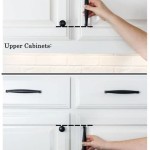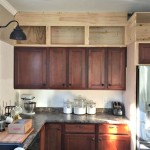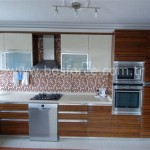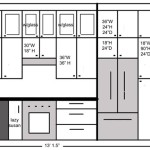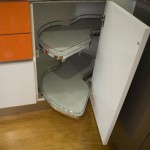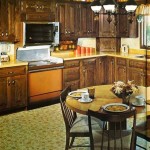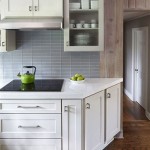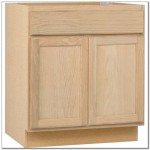Kitchen Cabinets Used: A Comprehensive Guide
The kitchen is often considered the heart of a home, and cabinetry plays a crucial role in its functionality and aesthetics. For homeowners seeking cost-effective renovation options or those drawn to the unique character of pre-owned items, used kitchen cabinets present a viable alternative to purchasing new. Navigating the world of used cabinetry requires careful consideration of various factors, from assessing cabinet condition to understanding potential renovation requirements.
Assessing the Condition of Used Cabinets
Before investing in used kitchen cabinets, a thorough assessment of their condition is paramount. Inspect the cabinets for structural integrity, checking for any signs of warping, water damage, or pest infestation. Warping can indicate exposure to excessive moisture, compromising the cabinet's stability. Water damage may manifest as stains, discoloration, or softened wood, potentially harboring mold or mildew. Evidence of pest activity, such as small holes or sawdust, necessitates careful consideration and possible professional treatment.
Examine the cabinet doors and drawers for functionality. Ensure they open and close smoothly, and check for any damage to hinges or drawer slides. Loose or broken hardware can often be easily replaced, but significant damage to the doors or drawer fronts themselves might require more extensive repairs. Evaluate the interior of the cabinets for cleanliness and any lingering odors. Strong smells may indicate previous storage of chemicals or food items and could require thorough cleaning or even professional odor removal.
Finally, consider the overall style and finish of the used cabinets. Assess whether the existing finish aligns with the desired aesthetic for the kitchen. Refinishing or repainting cabinets is possible but adds to the overall project cost and time commitment. Ensure the cabinet style complements the existing kitchen layout and design. Significant modifications to accommodate the used cabinets might negate any cost savings achieved by purchasing them secondhand.
Sourcing Used Kitchen Cabinets
Locating used kitchen cabinets requires exploring various avenues. Online marketplaces, such as classified ad websites and auction platforms, offer a wide selection of used cabinets from individual sellers. These platforms often provide detailed descriptions and photographs, allowing potential buyers to assess the cabinets remotely. However, it is crucial to verify the seller's reputation and request additional information or images if needed. Visiting the seller's location to inspect the cabinets in person is highly recommended before committing to a purchase.
Architectural salvage yards specialize in reclaimed building materials, including kitchen cabinets. These businesses often source cabinets from demolition projects or renovations, offering a diverse range of styles and ages. Salvage yards typically provide the opportunity to inspect the cabinets on-site and may offer delivery services. Habitat for Humanity ReStores are another excellent resource for used cabinets and other building materials. These non-profit organizations sell donated items at discounted prices, with proceeds supporting community development projects.
Networking within local communities can also lead to opportunities for acquiring used kitchen cabinets. Contacting contractors, remodelers, or even friends and family undertaking kitchen renovations can provide leads on available cabinets. Local online community forums or social media groups dedicated to home improvement or buy/sell/trade can also be valuable resources for finding used cabinets in the area.
Renovating and Installing Used Cabinets
Once acquired, used kitchen cabinets may require some level of renovation before installation. Thoroughly cleaning the cabinets is essential to remove any accumulated dirt, grease, or grime. A mild detergent solution and a soft cloth are typically sufficient for cleaning. For stubborn stains or odors, a stronger cleaning solution or professional cleaning service may be necessary. Minor repairs, such as tightening loose screws, replacing damaged hardware, or patching small holes, can often be easily accomplished with basic DIY skills.
If the existing finish is damaged or doesn't align with the desired aesthetic, refinishing or repainting the cabinets is an option. Refinishing involves stripping the existing finish, sanding the wood, and applying a new stain or varnish. Repainting requires thorough cleaning, priming, and applying multiple coats of paint. Both processes require careful preparation and execution to achieve a professional-looking result. If significant modifications are necessary, such as resizing cabinets or altering their configuration, consulting a professional carpenter or cabinet installer is recommended.
Proper installation is crucial for the functionality and longevity of used kitchen cabinets. Accurate measurements and careful leveling are essential for ensuring a proper fit and avoiding future problems. If the cabinets are being installed in a different layout than their original configuration, adjustments to plumbing or electrical connections may be required. For complex installations or significant modifications, hiring a professional installer can ensure a seamless and successful outcome. Utilizing existing cabinet hardware or sourcing replacement hardware that complements the desired aesthetic will complete the renovation process.

Used Kitchen Cabinets Are The Way To Go If You Reno Budget Is Tight

The Definitive Guide To Used Kitchen Cabinets

Kitchen Cabinets Morris Habitat For Humanity Re

Used Kitchen Cabinets For By Owner

Used Kitchen Cabinets Cabinet Value

Beautiful And Affordable Used Kitchen Cabinets

Why Buy Used Kitchen Cabinets Is It Saving Money

A Used Kitchen Mad About The House

Why Buy Used Kitchen Cabinets Is It Saving Money

Used Luxury Kitchens Little Green
Related Posts

